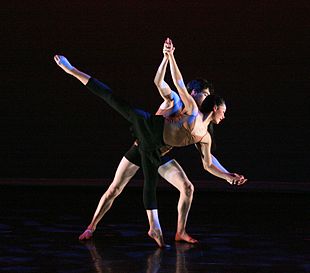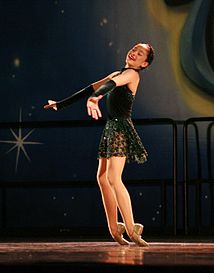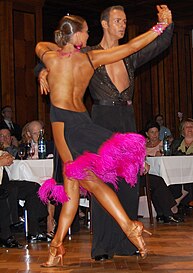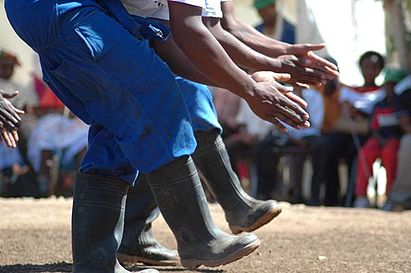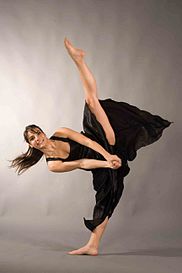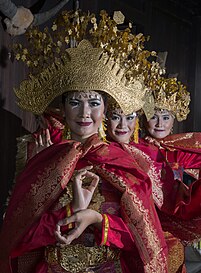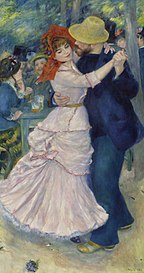ناچ
ڏيک
(رقص کان چوريل)
ناچ/رقص (انگريزي ٻولي: Dance)انسان جي جذبي جو سندس جسم جي عضون ۾ تحرڪ، چُر پر ۽ هلچل رستي اظهار. رقص جي مُراد آهي خيالن ۽ جذبن جو جسم ذريعي اظهار ڪرڻ. هر جسماني چُرپُر ۽ عمل ۾ ڪنهن نه ڪنهن خيال ۽ جذبي جو اظهار هوندو آهي. فني لحاظ کان فرق فقط اهو آهي ته جنهن کي رقص سڏجي ٿو، سو هڪ بار ترتيب ۽ با اصول فن آهن، جنهن جا پنهنجا اصول ۽ قاعدا ٿين ٿا. حقيقت ۾ رقاص جي هر تحرڪ ۽ چُرپُر ۾، عضون جي اشارن واري انداز ۾ امنگن جو اظهار لڪل رهي ٿو، جنهن کي فني صلاحيتن جا ڄاڻ رکندڙ ئي سمجھي سگهن ٿا. [1]
درشن خانو
[سنواريو]-
Folk dance – a trio of Irish Stepdancers performing in competition
-
A contemporary dancer performs a stag split leap
-
Dance partnering – a male dancer assists a female dancer in performing an arabesque, as part of a classical pas de deux
-
Acrobatic dance – an acro dancer performs a front aerial
-
A dancer performs a "toe rise", in which she rises from a kneeling position to a standing position on the tops of her feet
-
Social dance – dancers at a juke joint dance the Jitterbug, an early 20th century dance that would go on to influence swing, jive, and jazz dance
-
Latin Ballroom ballroom dancers perform the Tango
-
Gumboot dance evolved from the stomping signals used as coded communication between labourers in South African mines
-
-
A hip-hop dancer demonstrates popping
-
Prop dance
-
Modern dance – a female dancer performs
-
Stage dance – a professional dancer
-
A nineteenth century artist's representation of a Flamenco dancer
-
Ritual dance – Armenian folk dancers
-
A latin ballroom couple perform a Samba
-
Folk dance
-
A ballet dancer performs
-
Indian classical dancer
-
Ballet class of young girls wearing leotards and skirts in 2017
حوالا
[سنواريو]- ↑ .ڪتاب:ادبي اصطلاحن جي تشريحي لغت؛مرتب: مختيار احمد ملاح؛پبلشر:سنڌ لئنگئيج اٿارٽي




